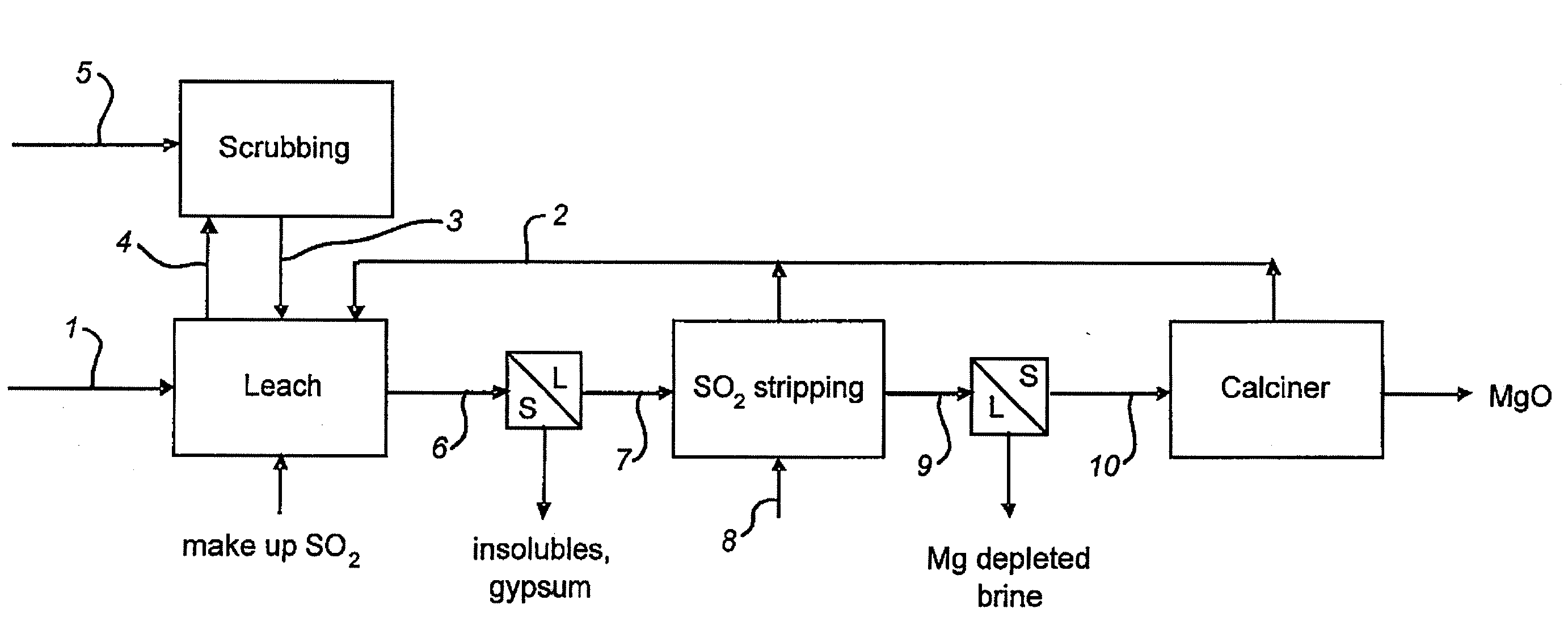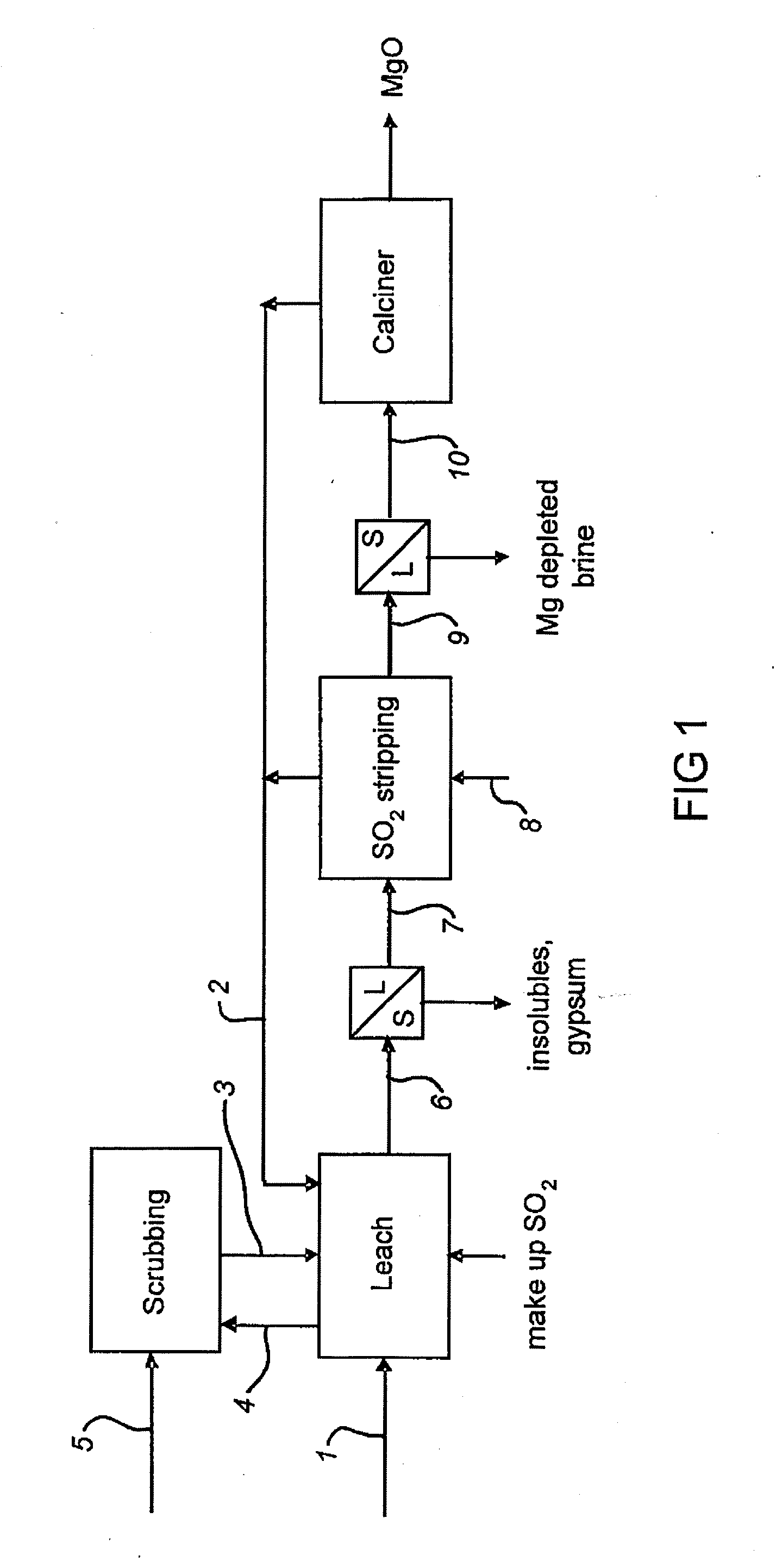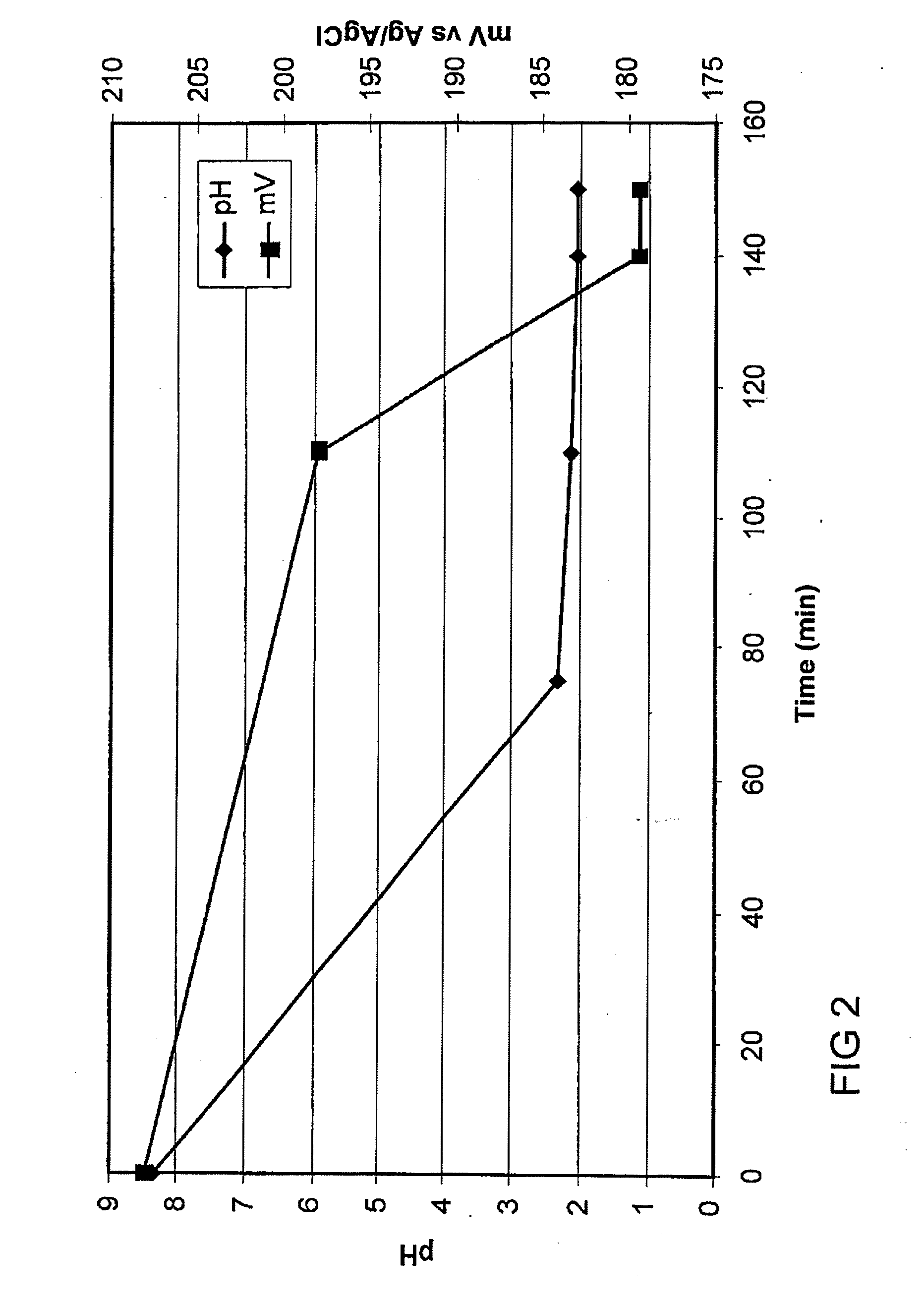Process for the Production of Magnesium Oxide
a technology of magnesium oxide and magnesium oxide, which is applied in the direction of magnesium compounds, chemistry apparatus and processes, etc., can solve the problems of increasing the cost of nickel recovery process, and reducing the quality of magnesium oxide, so as to achieve less cost and easy recycling
- Summary
- Abstract
- Description
- Claims
- Application Information
AI Technical Summary
Benefits of technology
Problems solved by technology
Method used
Image
Examples
example 1
[0040] A magnesium sulfate solution (0.5 L) containing 45 g / L Mg. 0.3 g / L Ca and 61 g / L S (as analyzed by ICP) was placed in a beaker equipped with a stirrer and sparge pipe. Limestone (87.4 g) was added and the mixture was stirred at ambient temperature. The pH of the mixture was measured and found to be 8.36. Sulfur dioxide gas was injected into the mixture at 30 g / min. The pH and solution potential (vs AgAgCl) are shown in FIG. 2. After 105 minutes the pH reached 2.04 and sparging was stopped. The slurry was filtered and the solids washed and dried, giving 139.2 g dry weight of crystals. Analysis by XRF showed these to be gypsum, containing 23.5%; Ca, 0.0%; Mg, and 18.3%; S. The filtrate (325 mL) was analysed by ICP and was found to contain 43 g / L Mg 0.4 g / L Ca and 309 g / L S.
example 2
[0041] The solution (305 mL) prepared as described in Example 1 was heated at the boiling point, with stirring, for 1.5 hrs. On completion, the slurry was filtered and the solids washed and dried, giving 65.6 g of colourless crystals. XRD analysis of the crystals showed them to comprise mainly MgSO3, 3H2O. Analysis by XRF showed the solids to contain 15.2%; Mg. 0.7%; Ca, and 20.9%; S.
[0042] The magnesium sulfite hydrate produced in accordance with the process shown in Example 2 may then be calcined to produce an active magnesium oxide product. Low temperature calcination of magnesium sulfite to magnesium oxide is demonstrated for example in U.S. Pat. No. 3,681,020 (Shah) which discloses a calcine temperature of 300° C. to 700° C. and U.S. Pat. No. 5,439,658 (Johnson et al.,) which discloses a temperature of 800° F. (426° C.).
PUM
| Property | Measurement | Unit |
|---|---|---|
| temperature | aaaaa | aaaaa |
| temperature | aaaaa | aaaaa |
| pH | aaaaa | aaaaa |
Abstract
Description
Claims
Application Information
 Login to View More
Login to View More - R&D
- Intellectual Property
- Life Sciences
- Materials
- Tech Scout
- Unparalleled Data Quality
- Higher Quality Content
- 60% Fewer Hallucinations
Browse by: Latest US Patents, China's latest patents, Technical Efficacy Thesaurus, Application Domain, Technology Topic, Popular Technical Reports.
© 2025 PatSnap. All rights reserved.Legal|Privacy policy|Modern Slavery Act Transparency Statement|Sitemap|About US| Contact US: help@patsnap.com



